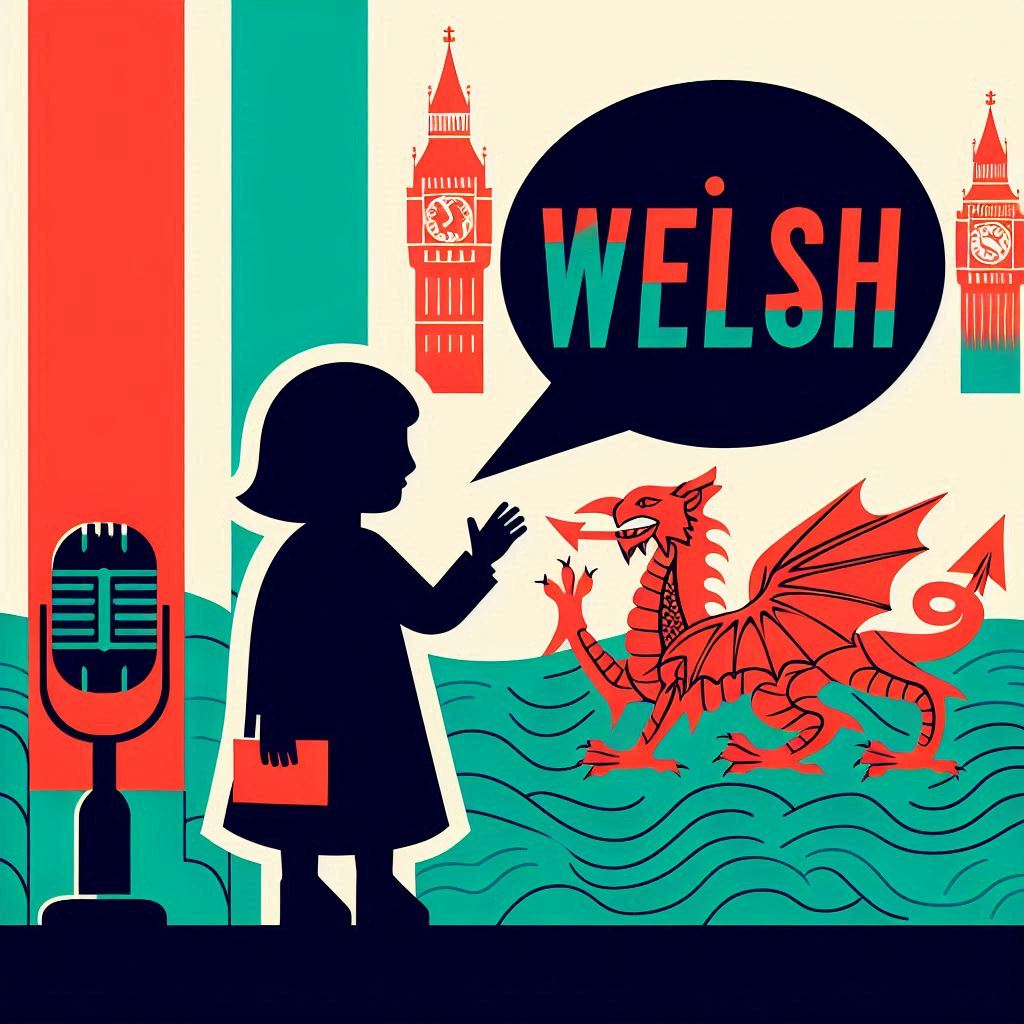
Voxify
Welsh Text to Speech
Effortlessly set up and deliver immersive audio experiences, Voxify has over 450 voices available to fit any of your needs, and you can control everything about the narration - pitch, speed and emotion. Great for content creators, podcasters and educators who are looking to up their voiceover quality.

Aled
United Kingdom
Welsh Text to Speech: Building Natural-Sounding Voice Audios
Did you know that approximately 330,000 people in the UK depend on speaking assistance tools? These vital communication aids help people with various health conditions and learning challenges express themselves clearly. Welsh text to speech technology now offers powerful solutions for Welsh-speaking communities.
Nia
United Kingdom
Aled
United Kingdom
Nia
United Kingdom
Ready to dive in?
Start creating with realistic voices.
The landscape of Welsh voice technology changed dramatically in late 2023. A milestone achievement brought 16 new synthetic speech voices to young people across Wales. These voices speak both Welsh and Welsh-accented English, allowing children who use communication devices to express themselves with authentic local accents that match their heritage.
Voxify's welsh text to voice platform stands at the forefront of this advancement. Our collaboration with Bangor University and NHS Wales delivers natural-sounding voice solutions that preserve cultural identity. Children and adults using our technology speak confidently with voices that sound just like their friends and family members - authentic, clear, and distinctly Welsh.

Understanding Welsh Text to Speech Technology
Welsh text to speech technology stands out as a unique challenge in voice synthesis development. The distinct features of Welsh language demand specialized solutions beyond standard English voice systems. Voxify's deep expertise in these linguistic nuances enables us to create authentic welsh voice over solutions.
What Makes Welsh TTS Different from English
Welsh (Cymraeg) presents unique phonetic challenges for voice synthesis systems. The language features voiceless nasal consonants, lateral consonants, and rolled 'r' sounds that demand precise modeling [9]. Most challenging is the distinctive 'll' sound - a voiceless alveolar lateral fricative rarely found in other languages [9].
Key differences from English include:
- Consonant mutation rules that alter initial sounds [9]
- Stress patterns focused on penultimate syllables [9]
- Direct spelling-to-sound relationships [5]
- Dual-function letters like 'w' and 'i' serving as both consonants and vowels [5]
Evolution of Welsh Voice Synthesis
Welsh voice technology traces its roots to the 1990s. Early developers adapted English systems for Welsh use [5], choosing diphone concatenation over rule-based methods due to limited Welsh acoustic research [5].
The Welsh and Irish Speech Processing Resources (WISPR) project marked a crucial turning point. Funded by EU "Interreg" [9], it built upon Edinburgh University's pioneering diphone synthesizer [10]. WISPR enhanced the Festival framework [10], adding UTF-8 support for Welsh characters [9].
2022 brought major progress with neural technology. Researchers developed the first substantial open-source Welsh corpus for neural TTS architectures [10]. This dataset features 10 hours of diverse recordings, capturing both northern and southern Welsh accents [10].
Key Players in the Welsh TTS Ecosystem
Major organizations shape Welsh voice technology development:
Bangor University's Language Technologies Unit
- Leaders in Welsh language technology research [5]
- Experts in terminology, processing, and voice systems [5]
RNIB & IVONA Partnership
- Created first natural Welsh voices [2]
- Enhanced accessibility for visually impaired Welsh speakers [2]
CereProc
- Released 16 youth-focused Welsh voices in 2023 [5]
- Supports both North and South Welsh accents [5]
Welsh Government Support
- Launched Technology Action Plan (2018) [2]
- Drives innovation in speech, translation, and AI [2]
Voxify builds on this foundation, offering online Welsh text to speech services that blend cultural authenticity with neural technology advances.

Practical Applications of Welsh Text to Voice Conversion
Ready to discover how Welsh text to speech technology creates real-world impact? From classrooms to train stations, these voice solutions shape daily life across Wales. Voxify's observations reveal remarkable benefits for Welsh-speaking communities.
Educational Tools for Welsh Language Learners
Modern Welsh learners gain powerful advantages through text to speech technology [8]. Students master pronunciation faster by mimicking native-like speech patterns, boosting both speaking accuracy and confidence.
Want free Welsh learning tools? The Welsh Government provides Cysgliad at no cost to:
- Individual learners
- Small organizations (under 10 staff)
- Educational institutions [9]
Teachers use Tiwtiadur to create engaging Welsh assignments [9]. ReadSpeaker's tools offer students:
- Text highlighting with synchronized audio
- Customizable reading speeds
- Mobile-friendly audio downloads [10]
Studies show students reach fluency goals faster when using multiple learning approaches [10].
Accessibility Solutions for Visually Impaired Welsh Speakers
Screen readers once struggled with Welsh text, limiting access to digital content for visually impaired Welsh speakers [2]. The RNIB tackled this challenge head-on, partnering with IVONA to create natural Welsh voices with Welsh Government funding [2].
These voices now serve both individuals and non-profit organizations without cost [2]. The impact reaches far - supporting approximately 330,000 people across the UK who need speaking assistance [5]. Companies like Tobii Dynavox provide essential Welsh language tools for users with speech difficulties [11].
Content Creation and Welsh Voice Over Production
Welsh content creators face unique challenges with only approximately one million native speakers (30% of Welsh adults) [12]. Text to speech technology opens new possibilities for:
- Marketing campaigns
- Educational content
- Social media audio
- Welsh-accent podcasts [12]
Voxify's quick generation speeds help creators produce more Welsh content while maintaining authentic sound quality.
Public Service Announcements and Transportation Systems
Listen for "Geraint" next time you're at a Welsh train station. This voice, powered by Amazon and IVONA technology, delivers clear Welsh announcements across 171 stations [7][7]. Transport for Wales developed this system specifically for Welsh pronunciation accuracy, enabling real-time bilingual updates [7].
Welsh Language Preservation Efforts
Can technology help preserve Welsh culture? The answer lies in strategic initiatives [8]. Following concerning declines in Welsh usage during the 1900s, government technology programs now actively support language preservation [12].
The Welsh Language Technology Action Plan drives accessibility improvements [9]. Bangor University contributes through bilingual voice development and transcription tools [9]. These advances keep Welsh vibrant and relevant, encouraging cultural awareness while supporting active language use [8].

How to Choose the Right Welsh TTS Service
Ready to select your Welsh text to speech service? Quality voice synthesis demands careful evaluation of key factors. Voxify's analysis of the Welsh TTS landscape guides you through essential selection criteria.
Voice Quality and Naturalness Factors
Modern Welsh synthetic voices achieve remarkable naturalness through deep learning advances. Google's TTS engine offers high-quality Welsh English voices that showcase these capabilities [13].
Quality assessment checklist:
- Welsh phonetic accuracy, particularly the distinctive 'll' sound
- Rhythm patterns matching native Welsh speech
- Smooth transitions in bilingual content
Premium providers deliver crystal-clear audio at 48kHz with 16-bit sampling [14]. Listen to CereProc's voices - they exemplify this high-fidelity standard.
Dialect Options: North vs. South Welsh Accents
Which Welsh accent suits your needs? North Welsh features eight unique vowels absent in South Welsh [15], creating distinct regional characteristics.
Regional distribution matters:
- North Welsh dominates Gwynedd and Conwy
- South Welsh prevails in Cardiff and Swansea [16]
Thanks to CereProc and Bangor University's collaboration, you'll find voices for both variants [5]. Julie Morgan, Wales' deputy minister for social services, emphasizes this choice: "children should not face a barrier to sounding like their friends and peers" [5].
Integration Capabilities with Existing Systems
Technical compatibility shapes implementation success. Consider these integration points:
- API accessibility
- Platform support scope
- Real-time synthesis performance
Pricing Models and Licensing Considerations
Three pricing approaches dominate the market:
- License-based: Annual fees suit high-volume users
- Volume-based: Pay-per-use fits occasional needs
- Usage-based: Scales with actual consumption [3]
Check commercial terms thoroughly. CereProc's annual £4.99 license includes broadcast rights [14]. ReadSpeaker provides flexible subscription options based on implementation scope [4].

Step-by-Step Guide to Creating Welsh Voice Audios
Ready to create professional Welsh voice content? Voxify's text to speech technology turns your Welsh text into natural-sounding audio through four simple stages. Let's explore each step.
Preparing Your Welsh Text for Optimal Results
Quality Welsh audio starts with well-formatted text. Your preparation directly impacts the final output quality. Follow these essential steps:
Text optimization checklist:
- Clear out redundant punctuation
- Standardize numbers and dates
- Create shorter, focused sentences
- Add SSML tags for precise control
Selecting the Appropriate Voice and Accent
"The right Welsh accent builds instant listener trust," explains Voxify's voice team. North and South Welsh accents carry distinct pronunciation patterns - which matches your audience?
Voxify's voice library features:
- 450+ unique voices
- Multiple Welsh dialects
- Gender-diverse options
- Welsh language and Welsh-English accent choices
Adjusting Pronunciation, Speed, and Tone
Want professional-quality Welsh audio? Master these five adjustment tools:
- Speed control: Match your content type
- Pitch refinement: Create distinctive voices
- Strategic pauses: Natural speech rhythm
- Emphasis markers: Highlight key messages
- Volume balance: Professional sound levels
Pro tip: Use SSML tags to perfect unique Welsh sounds like "ll" and "ch."
Exporting and Using Your Welsh Audio Files
Choose your ideal format - MP3 or WAV, with sampling rates from 16kHz to 48kHz. Higher rates mean better quality but larger files.
Enhanced production features:
- Music integration options
- Repeat playback settings
- Professional audio transitions
Your finished Welsh audio enhances:
- Learning materials
- Marketing campaigns
- Accessibility tools
- Public announcements

Future Directions in Welsh Text to Speech
What's next for Welsh synthetic voices? Scientists and developers push boundaries to create voices nearly identical to human speech. Let's explore the groundbreaking advances shaping tomorrow's Welsh voice technology.
Emotional and Expressive Welsh Voices
Picture Welsh synthetic voices that laugh, show concern, or express joy. Advanced TTS voices already support emotional expression, marked by a special ⚡️ icon for conveying various emotional states [17]. These sophisticated systems master:
- Context-aware emotional tones
- Life-like breathing patterns
- Smart phrase emphasis
These advances make Welsh synthetic voices remarkably human-like, particularly valuable for accessibility tools and content creation [8].
Voice Cloning for Personalized Welsh TTS
The Lleisiwr program offers hope to Welsh speakers facing voice loss [18]. One participant shared their experience: "Lleisiwr has been an asset to me as it means I can continue to communicate using a synthetic voice that sounds like me" [18].
This Welsh Government initiative breaks new ground. People with conditions like Motor Neurone Disease can now preserve their Welsh voice identity [19]. Modern cloning technology needs just 30 seconds of speech to create personalized voices, opening new possibilities for education and accessibility [20].
Cross-lingual Voice Transfer with Welsh
Scientists explore fascinating ways to share voice characteristics across languages [6]. Smart adapter modules learn language patterns during system training [6].
Voice cloning technology now helps non-English speakers maintain their accent while speaking English [1]. Soon, Welsh speakers will enjoy this same flexibility across multiple languages [18].
Real-time Welsh Speech Synthesis Advancements
Modern Welsh speech systems, powered by neural networks, deliver instant transcription for live captioning [21]. These systems learn from larger language databases, constantly improving their Welsh capabilities [21].
The Welsh government partners with leading AI organizations to enhance Welsh language processing [22]. Their focus? Building comprehensive voice databases that serve the entire research community, steadily advancing Welsh speech technology.

Conclusion
Want to witness the future of Welsh language technology? Welsh text to speech stands at an exciting crossroads. The recent launch of 16 synthetic voices marks a defining moment in making Welsh voice technology both accessible and culturally authentic.
Your journey through Welsh TTS revealed:
- Unique features distinguishing Welsh from English systems
- Leading organizations shaping voice innovation
- Real-world applications in schools, stations, and public spaces
- Smart selection criteria for Welsh TTS platforms
- Practical implementation steps
- Next-generation advances in voice expression and cloning
Voxify puts this power in your hands. Choose from 450+ voices, fine-tune every detail, and create emotional expression that connects with Welsh audiences. Each voice preserves authentic Welsh character while delivering crystal-clear audio quality.
Ready to give your Welsh content a voice? Voxify's platform makes it simple. Beyond serving today's communication needs, these tools safeguard Welsh linguistic heritage for tomorrow's generations. Join us in keeping Welsh language vibrant and accessible through innovative voice technology.
FAQs
Q1. What makes Welsh text-to-speech different from English TTS?
Welsh TTS has unique challenges due to distinctive phonetic elements like voiceless nasal consonants, lateral consonants, and the 'll' sound. It also needs to handle Welsh's consonant mutation system and stress patterns, which differ significantly from English.
Q2. How can Welsh text-to-speech benefit language learners?
Welsh TTS provides clear pronunciation models for learners, allowing them to practice speaking more effectively. It enables students to listen to native-like pronunciation, adjust reading speeds, and download audio files for mobile learning, enhancing their overall language acquisition process.
Q3. What are some practical applications of Welsh text-to-speech technology?
Welsh TTS is used in various fields, including education, accessibility solutions for visually impaired Welsh speakers, content creation, public service announcements, and transportation systems. It also plays a crucial role in Welsh language preservation efforts.
Q4. How do I choose the right Welsh TTS service?
When selecting a Welsh TTS service, consider factors such as voice quality and naturalness, dialect options (North vs. South Welsh accents), integration capabilities with existing systems, and pricing models. It's important to evaluate these aspects based on your specific requirements and target audience.
Q5. What future developments can we expect in Welsh text-to-speech technology?
Future directions in Welsh TTS include the development of emotional and expressive voices, voice cloning for personalized TTS, cross-lingual voice transfer, and advancements in real-time speech synthesis. These innovations aim to make synthetic Welsh voices more natural and versatile.
References
[1] - https://speechgen.io/en/tts-en-GB-WLS/
[2] - https://www.cstr.ed.ac.uk/downloads/publications/1995/Williams_1995_a.pdf
[3] - https://www.bangor.ac.uk/canolfanbedwyr/wispr.php.en
[5] - https://aclanthology.org/2022.cltw-1.15/
[6] - https://www.cereproc.com/en/WelshVoicesProject
[7] - https://www.rnib.org.uk/nations/walescymru/welsh-synthetic-voices/
[9] - https://speechactors.com/article/welsh-text-to-speech/
[12] - https://www.gov.wales/written-statement-welsh-language-technology
[13] - https://www.narakeet.com/languages/welsh-text-to-speech/
[14] - https://news.tfw.wales/news/transport-for-wales-launches-welsh-language-announcements
[16] - https://www.cereproc.com/en/node/1295
[17] - https://www.quora.com/which-is-the-better-pronunciation-style-to-learn-north-welsh-or-south-welsh
[18] - https://www.readspeaker.com/blog/text-to-speech-pricing/
[19] - https://www.readspeaker.com/pricing/
[20] - https://fliki.ai/guide/voices/welsh-61b8b3034268666c126bac2d
[21] - https://media.service.gov.wales/news/technology-enables-people-without-a-voice-to-speak-welsh
[22] - https://www.gov.wales/technology-enables-people-without-a-voice-to-speak-welsh
[23] - https://www.fineshare.com/ai-voice-cloning/welsh.html
[24] - https://arxiv.org/pdf/2105.11905
[25] - https://play.ht/news/cross-language-voice-cloning/
[26] - https://sigul-2023.ilc.cnr.it/wp-content/uploads/2023/08/11_Paper.pdf